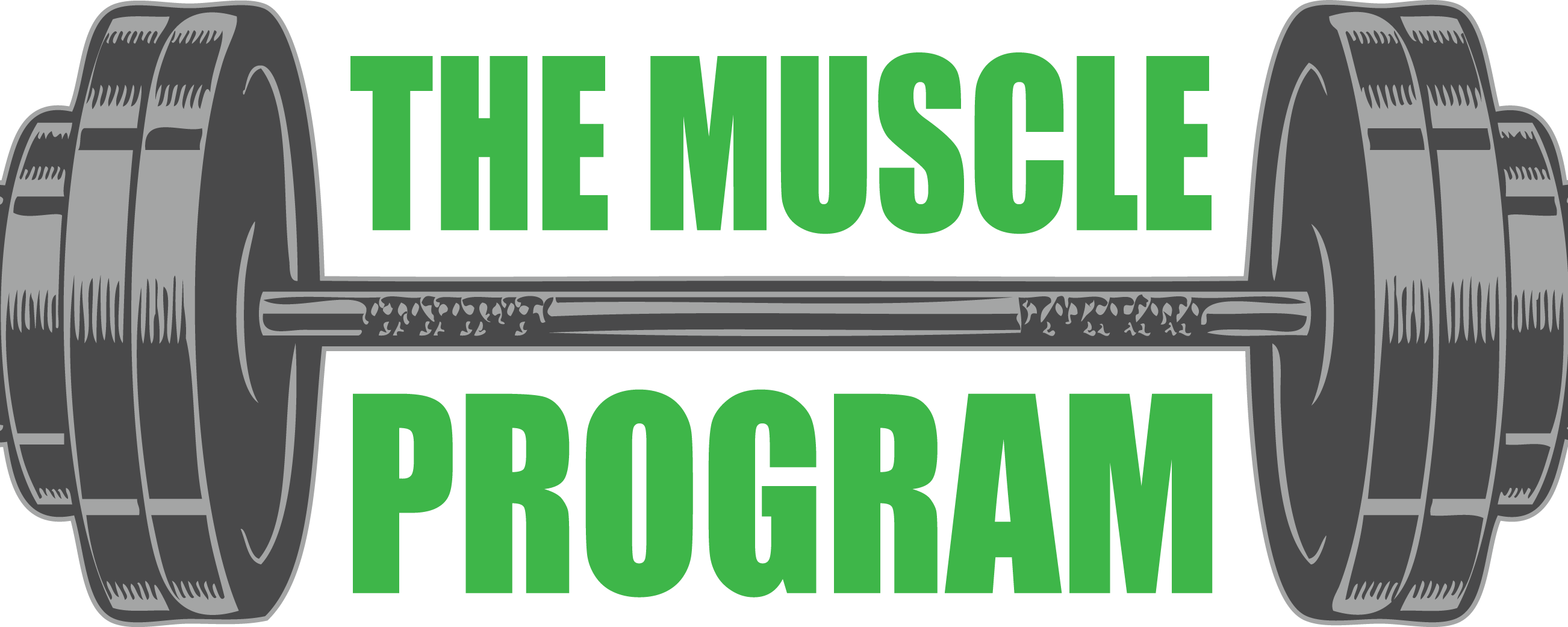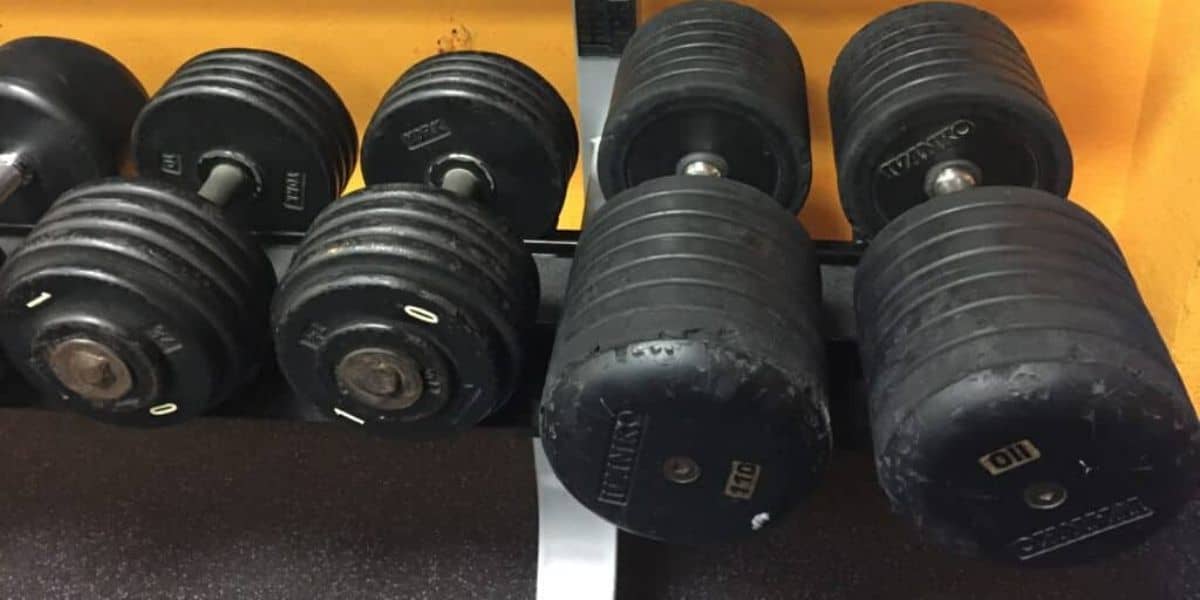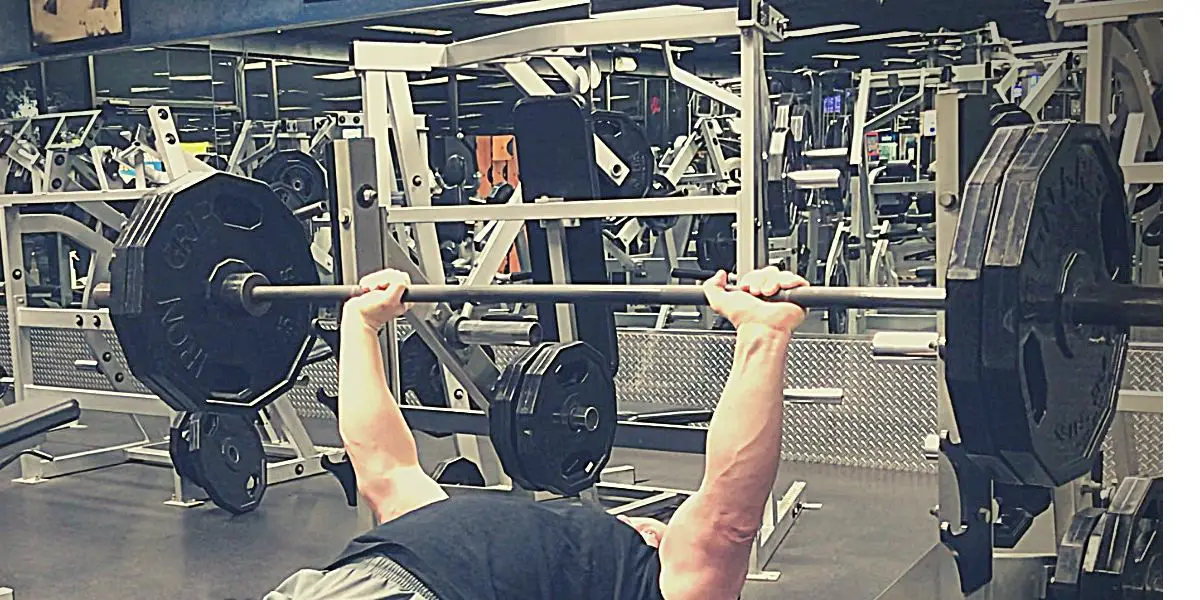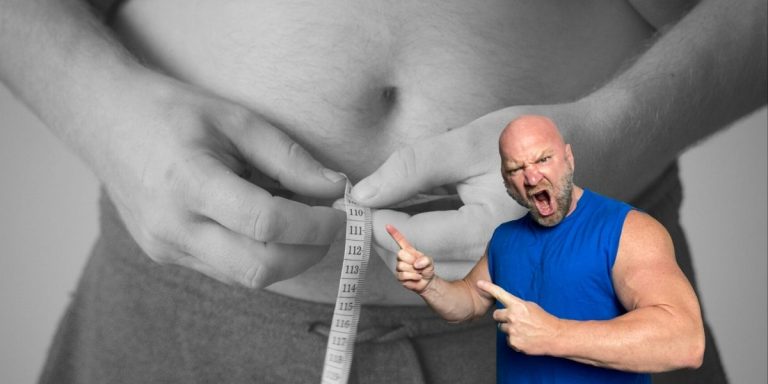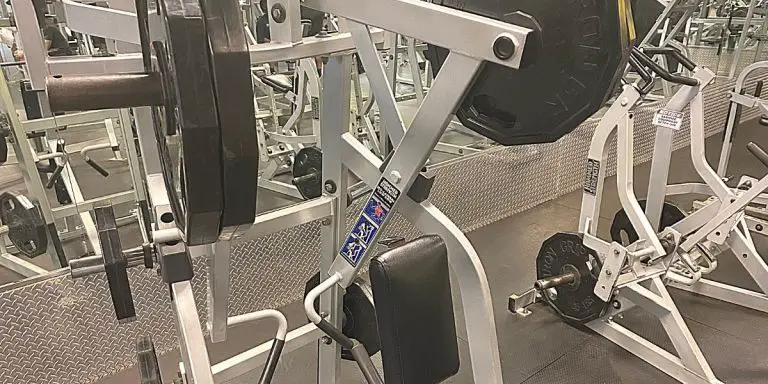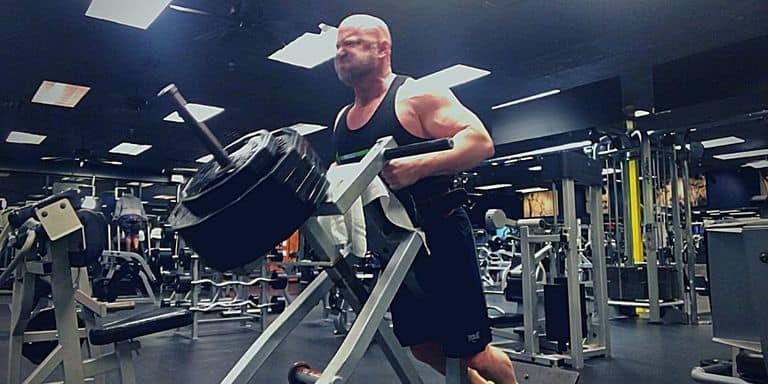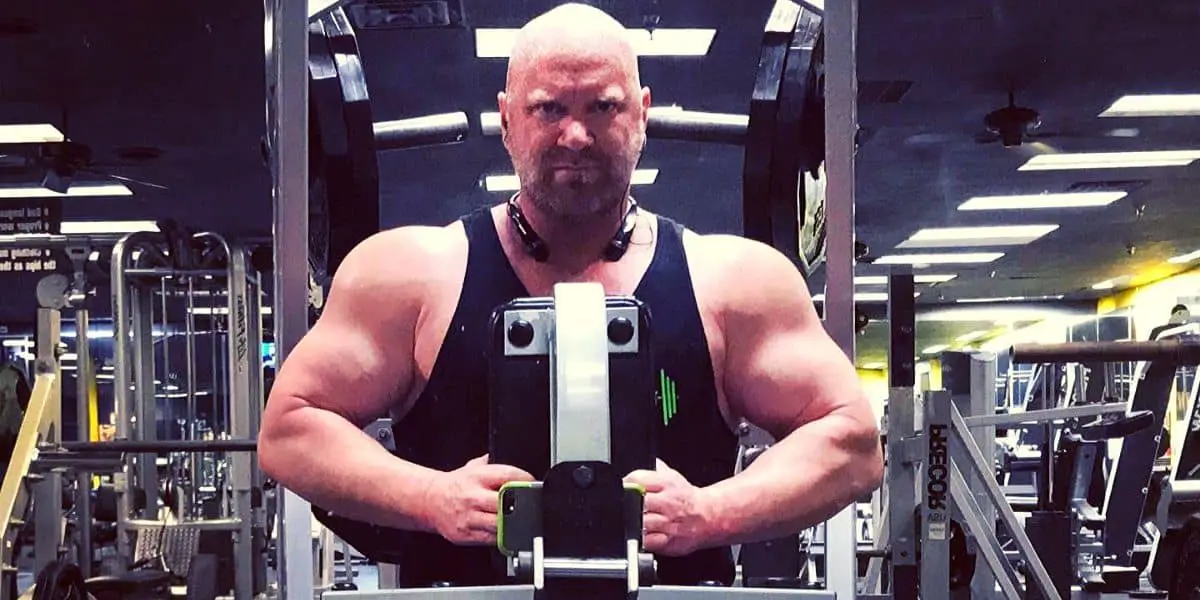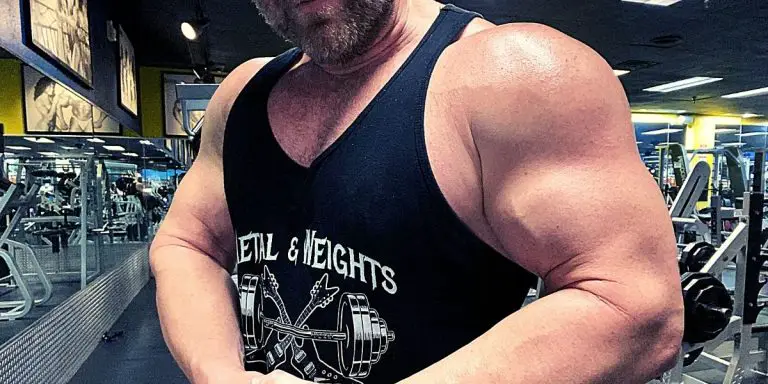Training Heavy VS Light for Muscle Growth: How to Make Gains with Both
It’s clear that if you want to get strong you need to be training with heavy weights. But does that same rule apply for actual muscle growth?
Yes, and no (don’t worry, we’re going to dive much deeper into that!).
And what about those who argue that you should only train with lighter weights to build muscle? While there’s some truth to that, there’s a ‘huge’ caveat, and we’ll cover that too.
In this post, I’ll cover the pros and cons of ‘heavy vs light weights’ for muscle growth. But more importantly, I’m going to show you how to use both together to maximize muscle growth.
**I’m also going to give you a full workout program in this post!
Going Heavy VS Light
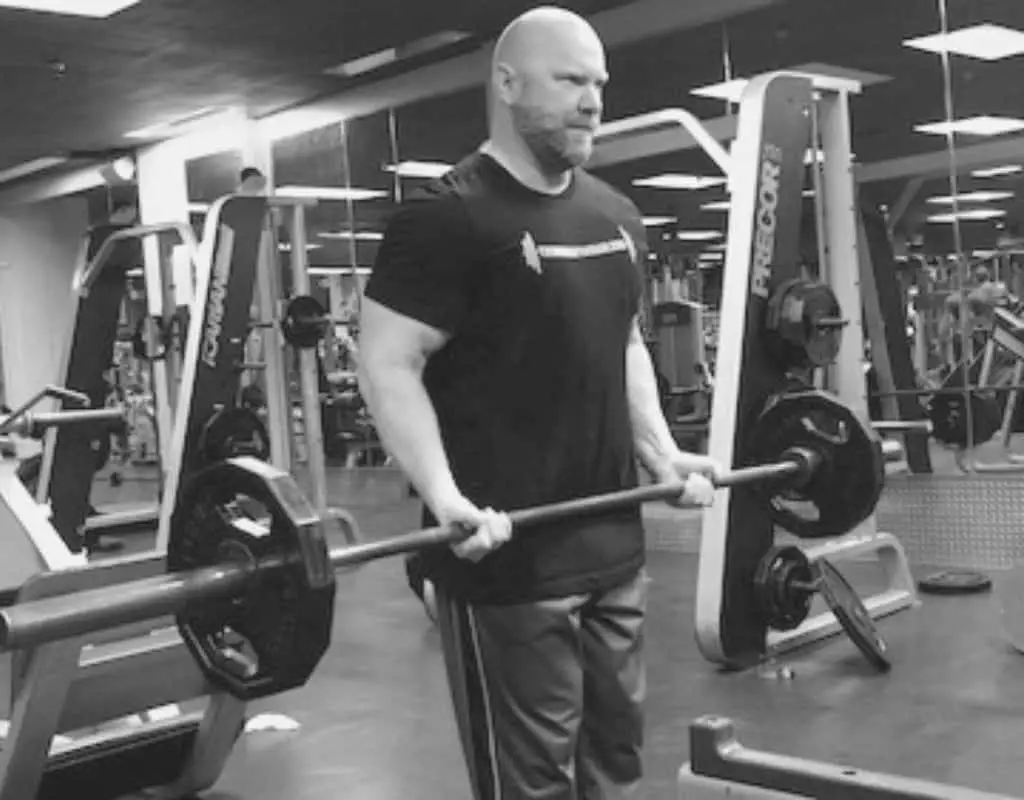
Many who are just starting their journey into bodybuilding and weight training think that lifting heavy is for strength and mass while lifting light weights are for getting ripped. Because of that, they may believe you have to do one or the other.
Let’s take a look at some advantages of both heavy and light weights…
Advantages of Heavy and Light Weights
| Heavy Weights | Light Weights |
|---|---|
| Builds strength | Builds stamina |
| Builds dense muscle | Muscle definition |
| Protects bones | Improves cardiovascular health |
| Changes the shape of the muscle | Changes the shape of the muscle |
| Enhances muscle growth | Enhances muscle growth |
As you can see, the benefits of both heavy and light cross over. In fact, they complement one another.
And we’ll dive deeper into how you can use both together (in the same workout) to maximize muscle growth.
Misconceptions of Heavy and Light Weights
So there are clear advantages to lifting heavy and light. And when we get to the workout routine below, you’ll see how it all comes together (you’ll want to go directly to the gym after you read about the workout!).
But first, let’s talk about some of the misconceptions of both heavy and light weights…
Heavy Weight Misconceptions
- You can only build muscle lifting heavy weights
- Lifting heavy will only make you look fat and bulky
- Heavy weights are only for powerlifting, not bodybuilding
- Lifting heavy is dangerous and causes injury
Light Weight Misconceptions
- You can’t build muscle lifting light weights
- Lifting light will make you look ripped but skinny
- Light weights are for the cover model look, not for bodybuilders
- Light weights are for sissies who are afraid to lift heavy
How to Combine Heavy and Light Weights
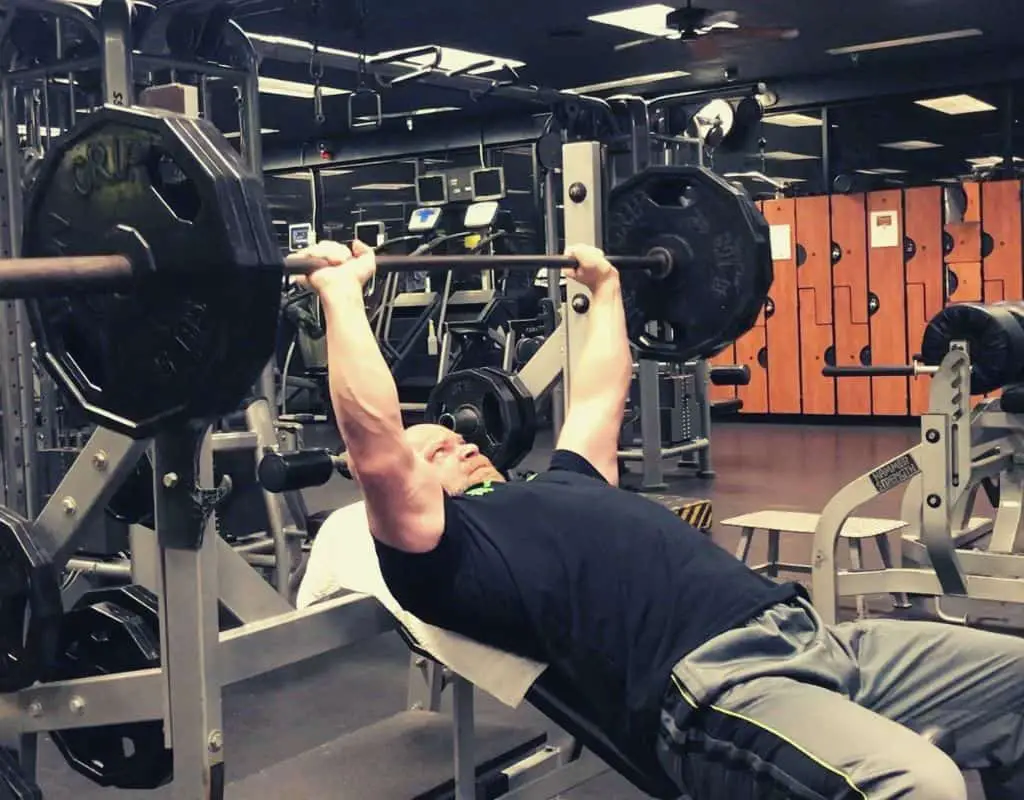
There’s a basic foolproof formula for muscle growth. You need to combine both heavy weights with lighter weights.
The problem with choosing just one method is you’re going to miss out on the advantages of the other. Granted, if being strong is your ultimate goal and you’re not concerned as much about hypertrophy, then lift heavy.
Likewise, if you just want to stay in shape and don’t care so much about building more muscle, then, by all means, lift light.
But that’s not why you’re here. You’re here to maximize your muscle gains. So here’s the basic formula to pack on more muscle…
Muscle Growth Formula
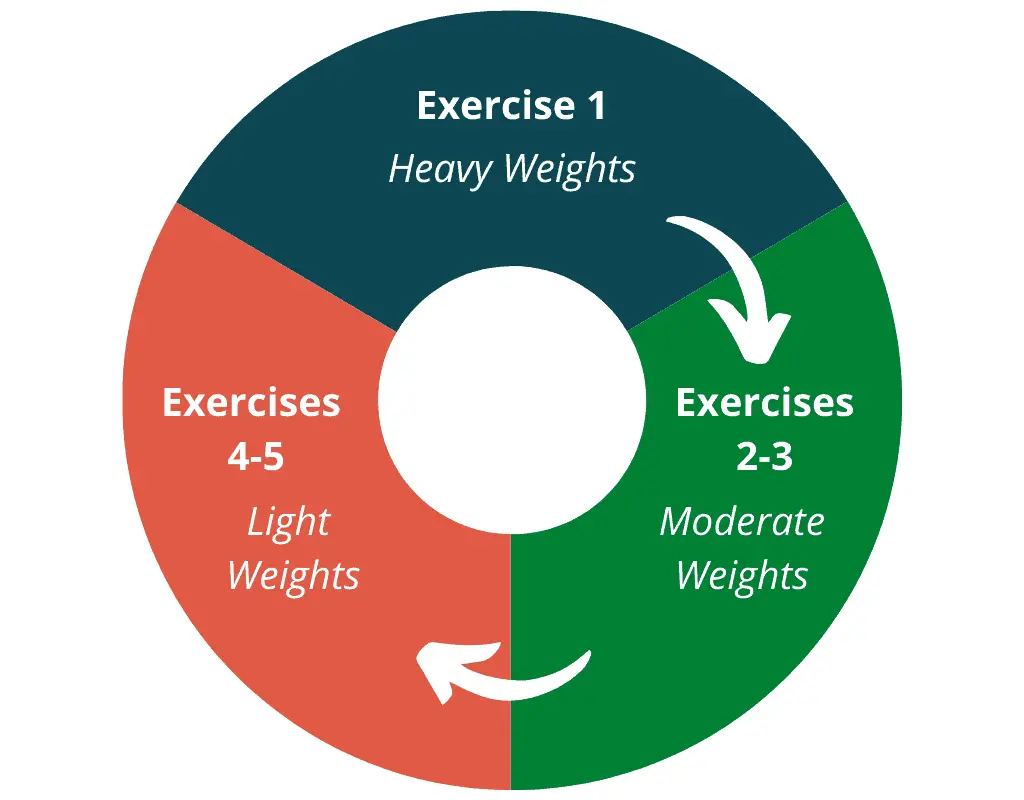
*This is what a workout for a major muscle group like legs or back would look like.
Smaller muscles only require 2-3 exercises, and even some muscles like chest or shoulders maybe just 4 exercises. This is just an example.
We didn’t touch on moderate weight earlier. But that’s the bridge between going heavy and light in the same workout.
Here’s an example of a back workout:
- Bent-over rows (heavy)
- Dumbbell rows (moderate)
- T-bar rows (moderate)
- Lat pulldowns (light)
- Seated rows (light)
I didn’t state the obvious earlier but you’ll, of course, be doing lower reps with heavier weights and your reps will increase when using lighter weights.
I have an entire post on rep ranges here that you can read after you finish this post: Low VS High Reps: Best Rep Range for Muscle Size
Heavy-Light Workout Routine
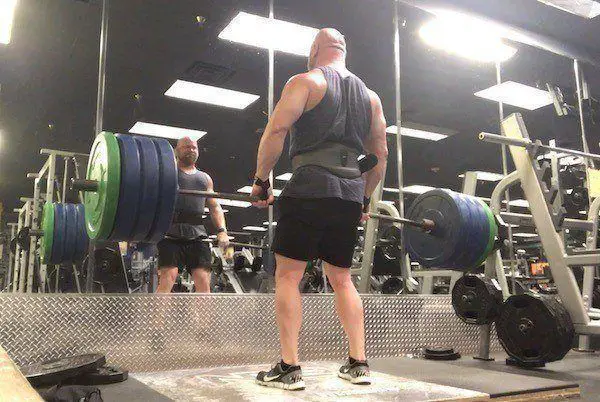
Now let’s take what we’ve learned and apply it to the gym. In fact, you’re going to go through an entire workout routine using the muscle growth formula chart.
This is a simple 4-day workout routine where you’ll train each muscle once per week. You could say this is a typical bodybuilding routine. Here’s your training split…
Training Split
- Day 1: Back
- Day 2: Chest and biceps
- Day 3: rest
- Day 4: Legs
- Day 5: Shoulders and triceps
- Day 6: rest
- Day 7: rest or repeat cycle
Heavy Sets
You’ll start every workout using heavier weights with lower reps. And you’ll be doing this with compound exercises like bent-over rows, squats, and bench press.
These exercises recruit more muscles and require more effort to perform. So going heavy will help you maximize both strength and muscle gain.
Moderate Sets
Moderate weight, for the most part, will still be heavy. But you will be using a weight that you can lift for about 8-10 reps.
The idea is to challenge your muscles but you also want to do enough reps to pump blood into your muscles. This is where ‘mass gains meets muscle definition.’
And you’ll be lifting moderate weights on exercises that are a cross between a compound and isolation exercises. For example, the incline bench press is compound in nature, but you’re also targeting more of your upper chest, which in theory is isolating your upper chest.
Light Sets
Training with light weight doesn’t mean easy weight. Remember when I told you there’s a caveat to training with lighter weights?
When you’re going light you need to force your muscles to work harder and make the weight feel heavier.
Read that again because that is imperative if you’re serious about muscle growth.
This means focusing 100% on using and contracting that specific muscle throughout the entire rep, every rep. This is why the lighter sets are saved for isolation exercises towards the end of your workout.
Rest Time Between Sets
Lastly, here’s what your rest time between sets should look like:
- Heavy, 6 reps or less (first exercise): 1:30
- Moderate, 8-10 reps: 1 minute
- Light, 12-15 reps: 30-45 seconds
Day 1: Back Workout
| Exercise | Sets x Reps |
|---|---|
| Bent-over rows | 4 x 6 |
| Dumbbell rows | 4 x 8 |
| T-bar rows | 4 x 10 |
| Lat pulldowns | 3 x 12 |
| Seated rows | 3 x 15 |
Day 2: Chest and Biceps Workout
| Exercise | Sets x Reps |
|---|---|
| Bench press | 4 x 6 |
| Incline bench press | 4 x 8 |
| Dumbbell press | 4 x 10 |
| Cable flyes | 3 x 12 |
| Preacher curls | 3 x 10 |
| Alternate dumbbell curls | 3 x 12 |
Day 4: Leg Workout
| Exercise | Sets x Reps |
|---|---|
| Squats | 4 x 6 |
| Stiff-leg deadlifts | 4 x 12 |
| Leg press | 4 x 12 |
| Leg curls | 3 x 12 |
| Leg extensions | 3 x 15 |
| Calf raises | 3 x 15 |
**You’ll notice the leg workout has higher reps overall. You may find that your legs respond better to higher reps due to the different types of muscle fibers.
You can read more about why higher reps may work better for you in this post: Why I Do Higher Reps for Legs
Day 5: Shoulders and Triceps Workout
| Exercise | Sets x Reps |
|---|---|
| Seated barbell press | 4 x 6 |
| Seated dumbbell press | 4 x 8 |
| Dumbbell shrugs | 4 x 10 |
| Lateral raises | 3 x 12 |
| Rope pressdowns | 3 x 10 |
| Dumbbell kickbacks | 3 x 12 |
Workout Supplements
Part of muscle building is performance and recovery, so I’m listing some of my recommended supplements to go with this type of workout.
*Each link goes to my review page on The Muscle Program…
- Animal Pak – my go-to vitamin source
- Xtend BCAAs – take during workouts
- TestoFuel – natural test booster
Rest Days and Training Frequency
You should still do something active on your rest days. You can do some type of cardio, even if it’s just taking a walk outside or on the treadmill. In fact, you can (and many of us should) do that on your training days as well).
You could dedicate more time to doing some core (abdominal) work or something like yoga on your rest days.
If there’s a particular body part that you’d like to bring up, you could opt to use one of those rest days to train that muscle twice a week. If this is the case, I don’t necessarily recommend training that muscle heavy again.
I’ve got 2 other posts you can read on how to train certain muscles twice a week below:
Lift Heavy and Light to Maximize Muscle Growth
Now you see the importance of using both heavy weights and lighter weights to take your muscle growth to the next level. One isn’t necessarily superior to the other.
It’s best to integrate both into your workouts. You’ll get stronger, gain more dense muscle, and will also be gaining muscle definition.
I hope you enjoy this workout and start making some serious muscle gains with it!
Excuses Don’t Build Muscle,
Jason
